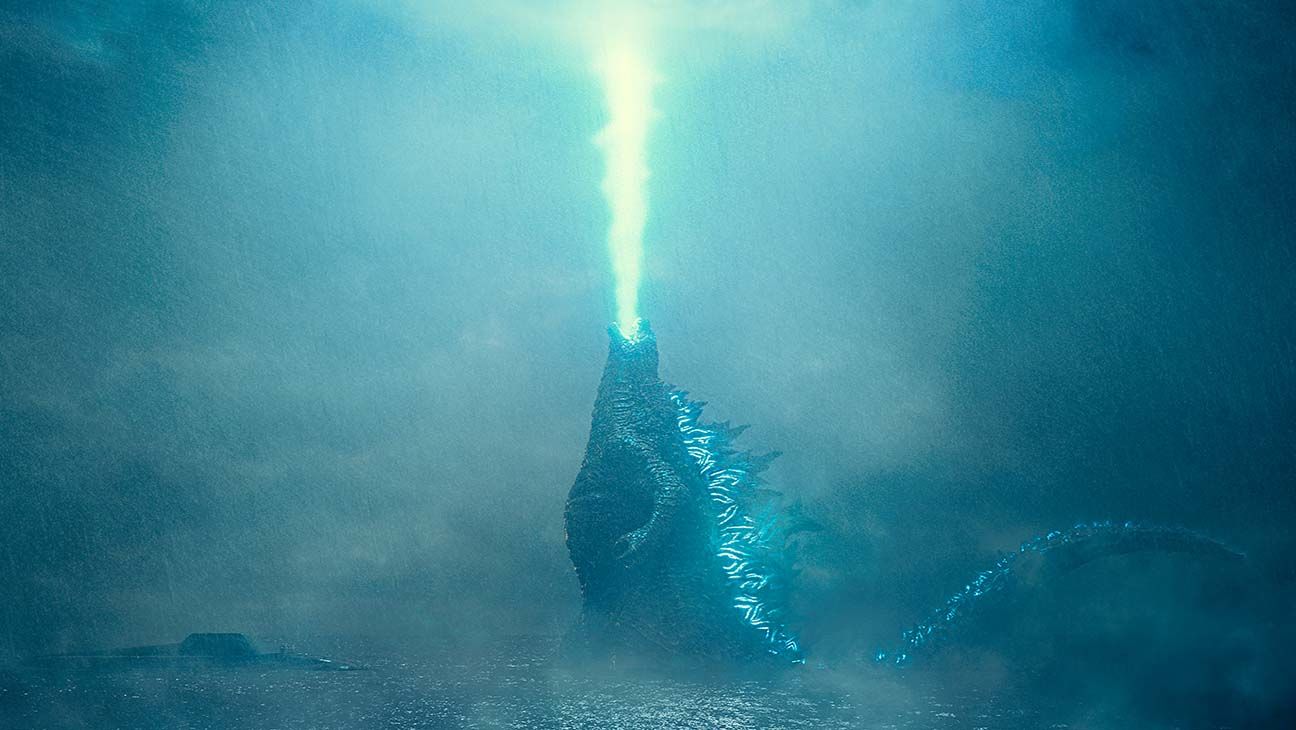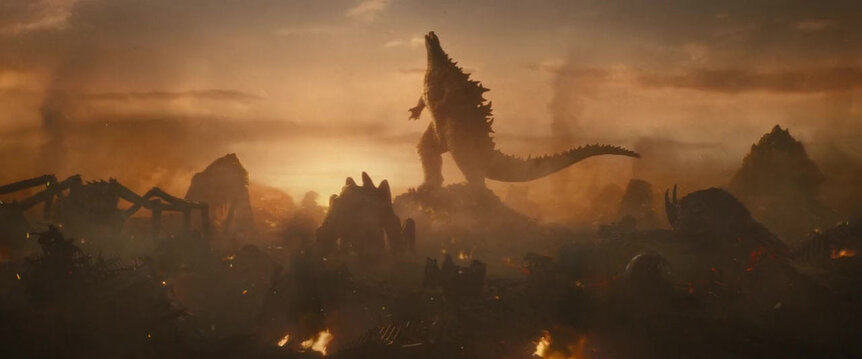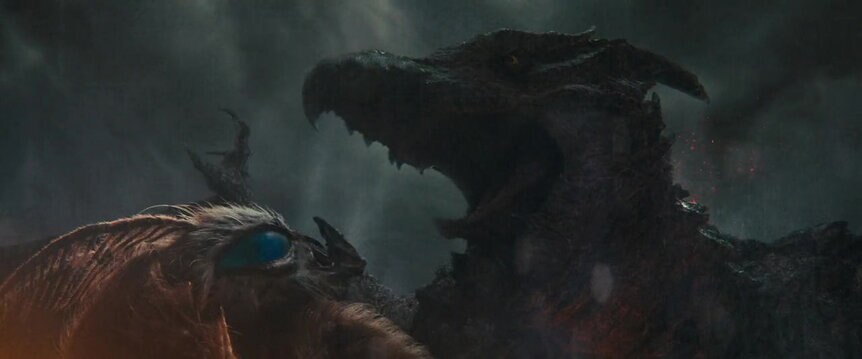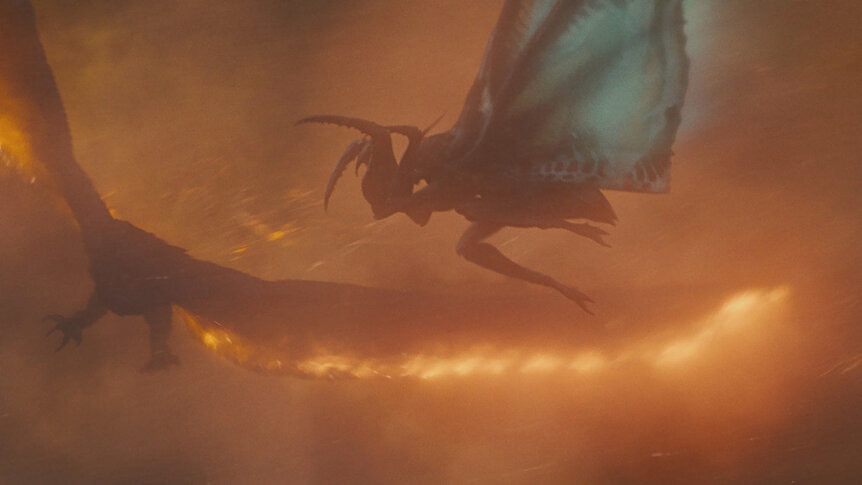Create a free profile to get unlimited access to exclusive videos, sweepstakes, and more!
Not Guilty: Godzilla: King of the Monsters

In Not Guilty, we look at movies and TV shows that the general consensus tells us we should feel bad for liking, but that our hearts tell us we should give a second look — "guilty pleasures" we don’t feel guilty about. This time around, we turn our attention to the third Hollywood Godzilla film, King of the Monsters!
The Godzilla franchise has a sprawling legacy going all the way back to 1954 with the self-titled film directed by Ishirō Honda. A response to the atomic horror of the bombings of Japan in WWII, Godzilla is, in some ways, always going to be a distinctly Japanese property. The crass commercialization of Hollywood has ever seemed at odds with the root of the franchise, which urges the acceptance of a larger, looming natural world against which we are a destructive but ultimately powerless foil.
However, there can be no massively successful, culture-shifting film franchise that Hollywood does not eventually take a shot at, and some of the most internationally well-known Godzilla films were indeed made in the U.S. That includes 2014's Godzilla and the subject that brings us here today, its sequel, King of the Monsters. Considered to be a box office disappointment, critical thrashings underscore the true merits of the film: it is about a bunch of enormous monsters throwing down with each other while the humans try not to die.
**SPOILERS ahead for Godzilla: King of the Monsters (2019)**
The plot of the film directly follows the 2014 take on the franchise. Five years after the catastrophic discovery of Godzilla, scientists have discovered the existence of several other Titans laying dormant all around the world. Divorced doctors Emma and Mark Russell struggle with the loss of their son during the initial crisis while attempting to parent their remaining child, Madison. The family goes in all different directions as Emma is discovered to be in cahoots with an ecofascist organization that awakens the monsters in hopes of returning them as the dominant species on Earth. The focus on this family is a bit arbitrary, but each of them serves as a representative of a different response to the monsters. Mark wants them all dead but slowly comes to see their beneficial side. Emma believes them to be the true rulers of Earth and the only way to save the planet but takes very little account of the cost of human life their reemergence entails. Madison mostly wants her parents to like each other again, but she mediates their positions by working to stop the monsters from destroying entire cities.
Again, we have to emphasize the part where there are monsters brawling. Monster Zero (King Ghidorah) is effective and frightening. Even when he first appears as a looming figure frozen in a block of ice deep in Antarctica, he inspires chills. When the ice breaks and his three heads whip around the screen, the CGI truly stands out. His fights with Godzilla are epic, from Godzilla’s ambush after Zero’s fight with Rodan to the cataclysmic final scene.
The first appearance of Godzilla in KotM is one of the best the character has ever known. One of Monarch’s submarines drifts through an ocean trench where Godzilla swims slowly towards the crew. Doctor Russell urges them to not only stand down but to lower their defenses to show that they are no threat. Godzilla comes face to face with their ship before sharply swimming in another direction, giving the crew a scare. The action that follows never erases that great, quiet, epic moment.
The supporting cast of the film has some definite standout characters — notably Ken Watanabe as Doctor Ishirō Serizawa, the voice of reason who fights for coexistence with the monsters and ultimately sacrifices his life to help Godzilla. Zhang Ziyi plays Doctor Ilene Chen, a mythologist descended from the Shobijin (the twin fairies from the Mothra films). Her role is comparatively minor, but she ties together major elements of the plot and has some of the better lines of the script.
The worst thing King of the Monsters does is waste Mothra, but even that isn’t as bad as it could be. Mothra might not get even remotely the screen time she deserves and she does ultimately get destroyed in a moment that is anticlimactic and serves to set up Godzilla’s ultimate triumph, but still, it’s Mothra! Seeing her onscreen with modern-day special effects, looming over awed scientists and crew, can’t help but give fans of the series a thrill. Mothra’s fight against Rodan is a ton of fun and makes for one of the tensest brawls of the film. Besides, it is established that the monsters will regenerate over time, so there is no way this is the end of our beloved Mothra. We will always take more Mothra, and she always deserves better.
2019 just might not have been the year for breathless wonderment, as the brilliance of the special effects generally goes neglected by critics who focus on the admittedly loose plot. However, Godzilla has always been a study of humanity's inability to cope with either our destructive power or a creature that we cannot subjugate, and that is likewise the story at the heart of King of the Monsters. To what degree the film misses the point or fails to provide equal cultural resonance or commentary to the original movies ultimately takes a backseat to the awe-inspiring fight scenes between monsters that have, over decades, become some of the most recognizable characters in cinematic history.





























